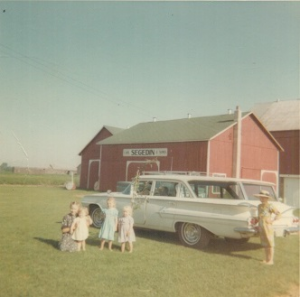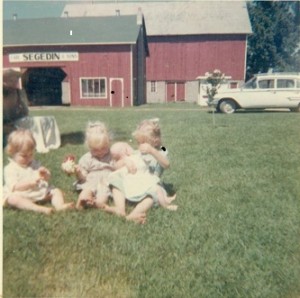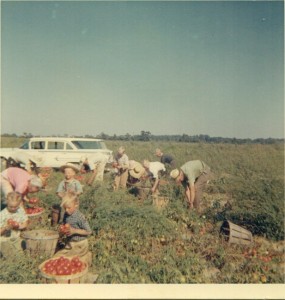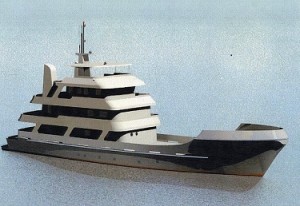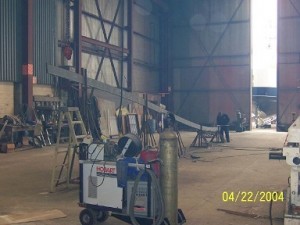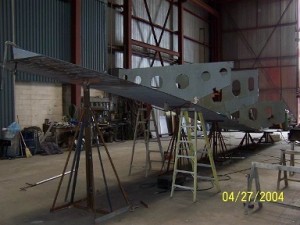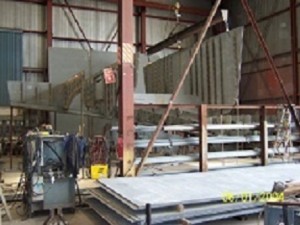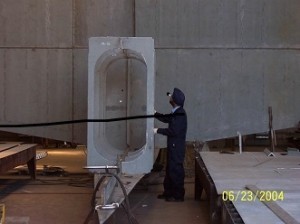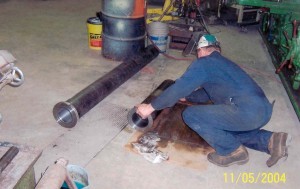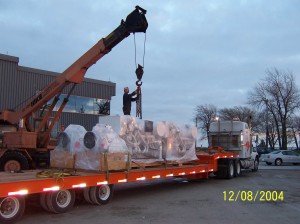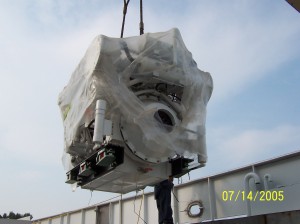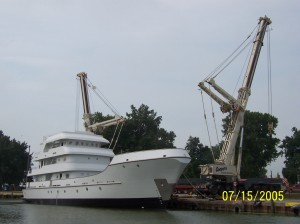George Friesen’s Story
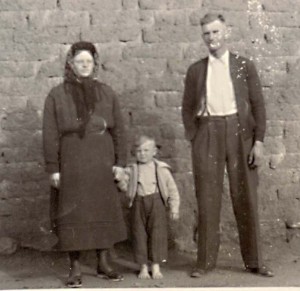
George’s parents are Bernhard and Anna Friesen; Gerhard and Agatha Friesen are his grandparents, who were born in Manitoba. George is married to Cindy, whose parents are Dwain and Barbara McCracken; grandparents are Fred and Evelyn MacVoy. George and Cindy have two children: Kenneth, (married to Lisa), and Chelsey. Ken and Lisa have a son called Jaxon.
George was born in Cuahtemac, Chihuaha Mexico in 1956. The Friesen family lived on a farm (about 100 acres) growing corn, wheat, and oats, as well as raising milk and beef cattle.
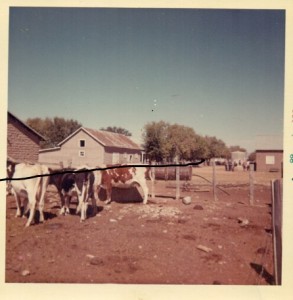
In the years 1967 to 1969 the region they lived in experienced a drought which meant that mortgage payments could not be made in time, in spite of bank loans. When the bank would not loan them any more money the Friesen family decided to come to Canada where they might earn enough money to pay for the farm.
The family sold all of their cows as well as machinery in preparation for going to Canada. In 1969 George, when he was to13 years of age, together with his parents and 13 siblings (from two sets of parents) arrived in Canada. They had travelled all the way from Mexico in a white Station Wagon. The entire family worked on Carl Segedin’s farm picking tomatoes. Carl Segedin had converted a large garage into living quarters suitable for large families which is where the Friesen family lived for the summer.
Their intention was to make enough money picking tomatoes to help pay for their mortgage and begin clearing up some of their debts.
The exchange rate on Canadian and Mexican currency ( 1 US dollar for 12 pesos) was very favourable. The Friesen family returned to Mexico for the following winter, their intention being to return to Canada the following year.
| However their next attempt to repeat the journey turned out to be a nightmare. For one or another reason they were not allowed re-entry into the United States and, to make matters worse, much worse indeed, one of the children became desperately ill. In addition to that their passports and a significant amount of money were stolen by pick pockets. Fortunately Mr. Friesen had retained enough cash for the family to return to Mexico where they borrowed money from friends and tried again to return to Canada. This time they were successful. Soon after they arrived the family picked strawberries and tomatoes. | |
George’s father found work at Hike Metal Products, a ship yard in Wheatley that started operations in 1958. The family now found permanent found residence in Canada.Home On The Segedin Farmean time George worked for Bill Cliford, a green house farmer whose farms were called R X Farms, where he learned how to weld and do mechanical work. After having worked there for 5 years George applied for a job at Hike Metal Products where his father worked. Upon being asked: “ What can you do?” George answered: “I can do anything.” The new found boss apparently took George at his word and hired him.
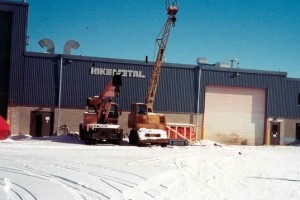
George says that he was given non-critical jobs for a year or so during which time where he discovered that light metal welding is not the same as heavy metal welding, but he was shown how to do the work by fellow workers.
Then he took an on the job training course in welding and, after a year or so, got a High Pressure Welding Ticket from government certified inspectors. After having completed the course on welding he worked on a triple – decker 70 to 80 foot long ferry boat, which the company was building for Perry Sound.
The sea faring vessels built by the company now included 30 to 140 foot long vessels, including pleasure yachts, research and OPP boats, car ferries, and catamarans. The hulls of these vessels is usually made of steel while the superstructures are made out of aluminum. At the present the company is building two catamarans to replace the ‘maid of the Mist’ at Niagara Falls, each carrying 700 passengers. Car ferries are generally made completely out of steel. Architects prepare the drawings for all vessels.
At present George installs piping equipment, engines, and engine bearings. The steel shafts pass through a set of steel bearings lined with grooves through which water flows to act as a bearing. George has established a secure employment and says he will retire ‘when they lay me down. His wife Cindy drives school bus and loves children.
The following pictures illustrate the projects that George was involved in when his company built their largest sea going vessel in 2004.
In time George became familiar with every aspect of the work being done at Hike Metal Products, as the pictures show. George was now an indispensable worker. His attitude towards himself and his achievements is best illustrated by a story George read in a booklet entitled Our Daily Bread, about a golfer who won a prestigious prize in a tournament:
“As the golfer stepped off the 18th green to receive a highly coveted prize a reporter said: “This must be the greatest day of your life!”. Without hesitation the golfer replied: ‘ “It’s wonderful to win the greatest tournament in the world but it means more to win on Easter Sunday – to celebrate the resurrection of my Lord and savior.”’ George points out: “The golfer had an opportunity to boast about himself but instead he turns the spotlight on Jesus”. George says that he would like his story to end like that. He doesn’t want to be remembered as one who boasts about his accomplishments.
George considers it to be his priority to disseminate the booklet: Our Daily Bread so that his co-workers may, as he calls it, ‘get on the same page’ that he is on. This is, he says, where he finds his wisdom and strength. “Whenever I’m in a corner I pray for wisdom, and in some miraculous way, it always comes – so all the credit goes to God. My motto is to build treasures in heaven. So if we’re boasting we’re building up treasures on earth, and that’s all we’re going to get. So when I read the story about the golfer I can relate to it in a heartfelt way.”
